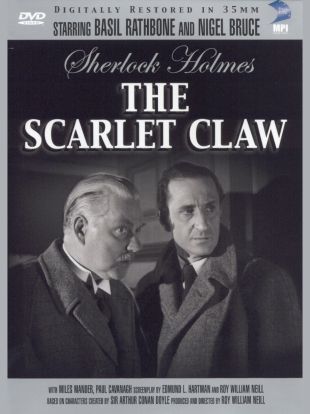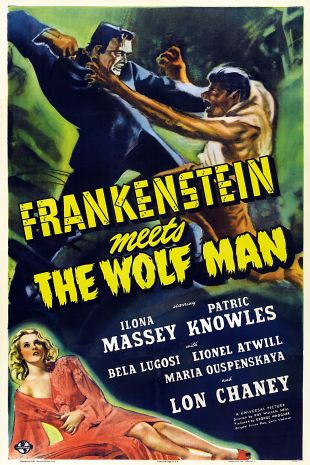Roy William Neill was one of the most successful and respected of B-movie directors of the '30s and '40s. He was born Roland de Gostrie, off the coast of Ireland on a ship where his father was captain, and went on the stage while still a child. Neill joined the film industry in 1915 as an assistant to Thomas Ince, and a year later made his debut as a director with A Corner in Coleens, subsequently directing 40 silent films. He made one talkie for MGM before moving to Columbia Pictures, where he worked until the mid '30s. While at Columbia, Neill directed the atmospheric period chiller The Black Room (1935), the best movie that Boris Karloff made away from Universal in the '30s. In 1935, he went to England, where better opportunities existed for American directors, and spent the next three years there, working for Gainsborough Pictures and later for Warner Bros.-First National. Among the features that he made while there was the 1935 drama Dr. Syn, starring George Arliss and Margaret Lockwood, about a local vicar who has a connection with a long-missing pirate, and who tries to save his village from the oppression of the king's soldiers. In 1936, Neill got what could have been the best picture-making opportunity of his career. In May of that year, screenwriter and future director Frank Launder suggested that Gainsborough Studios buy the rights to Ethel Lina White's new mystery novel The Wheel Spins, which they did and assigned Launder and his longtime associate Sidney Gilliat to adapt into a screenplay called Lost Lady. The script was completed in August of that year and Neill was chosen as director of Lost Lady, and a film unit was sent to Yugoslavia to shoot some summer exteriors under an assistant director named Fred Gunn. Unfortunately, Gunn broke his ankle in an accident, and in the course of investigating, the police found his script and demanded to review the manner in which it treated their country. The opening pages -- which found parallels between goose-stepping soldiers and geese waddling -- offended the authorities, and the entire unit was expelled from the country. By that time, both Neill and the studio had lost much of their original enthusiasm for the project, and it was shelved while Neill went to to other thrillers. A year later, as he was finishing up Young and Innocent for the same studio, Alfred Hitchcock was looking for another film and asked the studio if they had any screenplay on hand that would be suitable for him. What they pulled out was Lost Lady which, after a few minor rewrites, became The Lady Vanishes.
Neill returned to the United States after the war broke out and went to work for Universal in 1941, where he quickly distinguished himself with his stylish handling of a low-budget crime thriller called Eyes Of The Underworld. He was assigned to the Holmes series under Howard Benedict during the fall of 1942, and went on to direct each installment after Sherlock Holmes And The Voice of Terror and produce all but Sherlock Holmes And The Secret Weapon.
According to Rathbone in his memoirs and other survivors of the series over the years, Neill -- who was known affectionately to Rathbone as "Dear Mousie" -- was the final arbiter in all things Holmes-ian on the set of the Universal series. In addition to being a master directorial interpreter of the character, Neill also got a joint writing credit (with Bertram Millhauser) for the screenplay of The Scarlet Claw, which is arguably the best entry in the entire Universal series. Neill also directed and produced Frankenstein Meets The Wolf Man -- the last wholly serious entry in Universal's second monster cycle -- and Gypsy Wildcat during the four years he worked on the Holmes series. His death from a heart attack in London early in 1946, shortly after completing work on the thriller Black Angel, brought an end to the Holmes series. A recognized stylist among B-movie directors, Neill's work is characterized by meticulously lit scenes and carefully layered shadows, with restrained by mobile camera movements.


/_derived_jpg_q90_310x470_m0/BlackAngel1946-PosterArt.jpg)